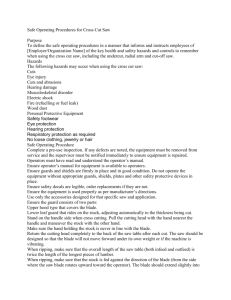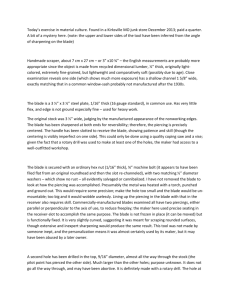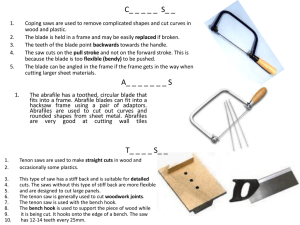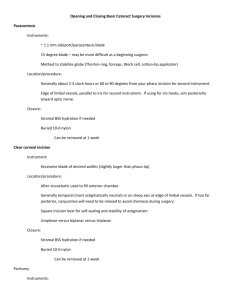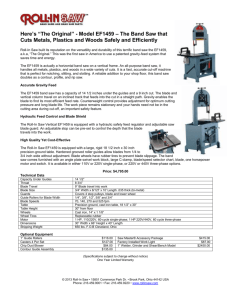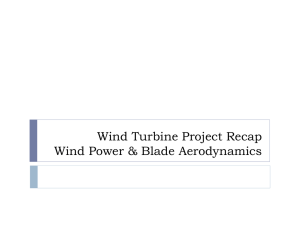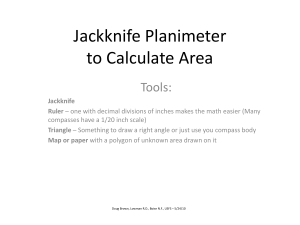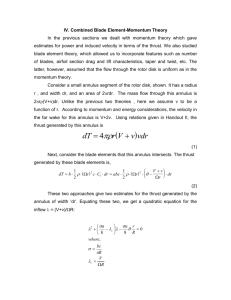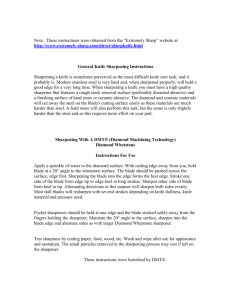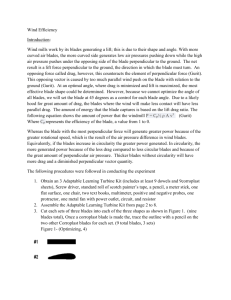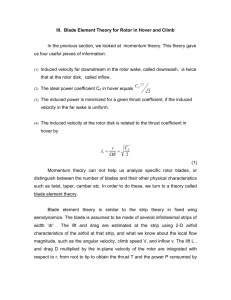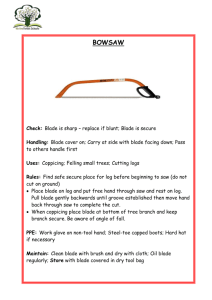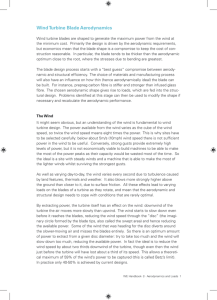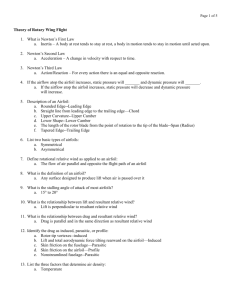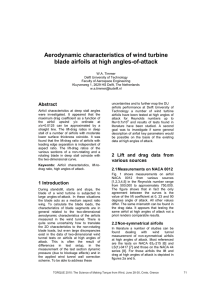Wind Engineering Module 4.1 Blade Element Theory
advertisement
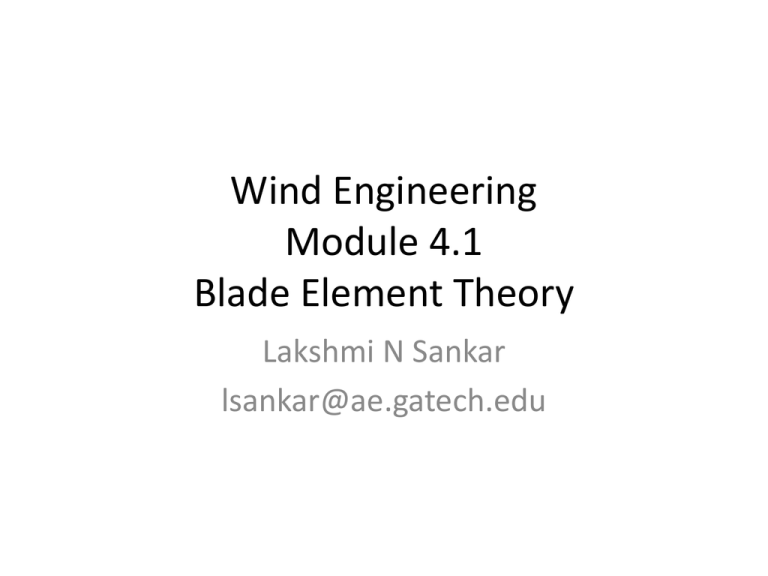
Wind Engineering Module 4.1 Blade Element Theory Lakshmi N Sankar lsankar@ae.gatech.edu Recap • In Module 1, we looked at an overview of the course objectives, syllabus, and deliverables. We also reviewed history of wind technology, nomenclature, and case studies. • In Module 2, we looked at the wind turbine as an actuator disk, and established the theoretical maximum for power that may be captured. • In module 3, we reviewed airfoil aerodynamics, and discussed how to compute lift and drag coefficients. We also reviewed airfoil design issues. OVERVIEW • In this module 4.1, we will review the basics of blade element theory. • In module 4.2, we will talk about public domain solvers, and show how to use these. • When module 4.2 is done, you are ready to validate one of these solvers using available wind turbine data. – This will be the second deliverable for this course. Blade Element Theory • We look at a reference blade from a multi-blade system (typically 2 or 3). – Blade, geometry, wind speed, blade RPM, and blade pitch angle are assumed to be known or chosen. • We divide the blade into strips, aka blade elements. • On each strip/element – We find the local section angle of attack. – We look up the corresponding lift and drag coefficients from a table of airfoil characteristics. – We correct these for tip losses, root losses, stall delay, swirl losses as needed. – We find lift and drag forces. – We find the propulsive force (in the plane of rotation) – We find the torque contribution of that strip. • Sum up the toque contribution over all strips to find torque for one blade. • Multiply by the number of blades, B. • Vary the wind speed and compute the entire performance map. Calculation of Angle of Attack • The figure on the right is from AeroDyne Theory manual, found in the resource section. – b is pitch angle (known from from blade geometry) – U∞ is wind speed – a is the axial induction factor (axial induced velocity v divided by wind speed), discussed later. – a’ is a tangential induction factor (tangential induced velocity divided by wr), discussed later. – lr is the local speed ratio Wr/ U∞ Lift and Drag are functions of Angle of Attack, a • Once a is known, we can look up lift and drag coefficients: Cl and Cd . • Unfortunately, these quantities influence the axial induction factor a and the tangential induction factor a’. • An iteration is needed as discussed later. • If Cl and Cd are known, we can find sectional forces and torques as shown on the right side. Thrust generated by the Strip of width dr and chord c, for all the blades, B: Torque generated by the Strip of width dr and chord c, for all the blades, B:



